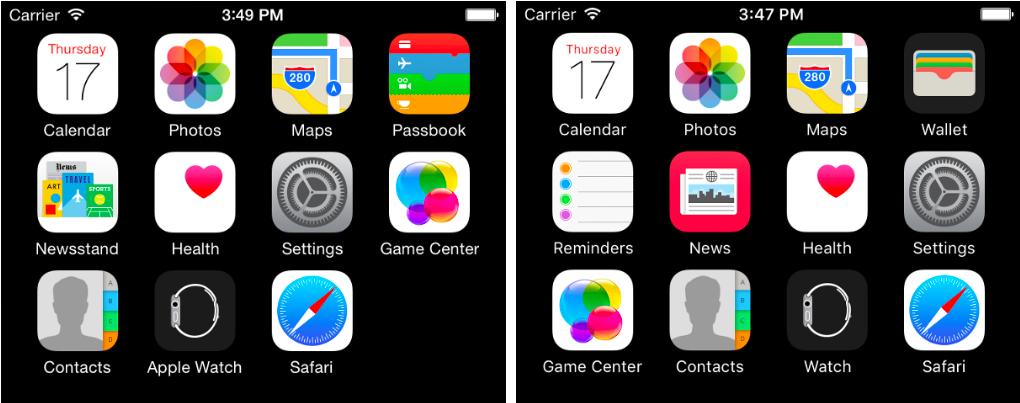
When Apple introduced the Apple Watch in September of last year, they also introduced a new font with San Francisco. A font that while initially trapped to a small display, would soon find its way to Apple’s iPhone 6s and even OS X El Capitan.
As such, San Francisco has effectively replaced the stalwart Helvetica font for all of Apple’s system fonts, changing to something that’s a bit more adaptable to any screen that it might be read on. In fact, there are actually two variants of San Francisco: San Francisco and San Francisco Compact, or, as Apple lists them, “SF” and “SF Compact,” with the former present on iOS/OS X and the latter present on the smaller Apple Watch. The subtle change is there, if it’s hard to see at first glance, but with SF Compact there are more margins between letters, which makes the font easier to read on the smaller display.
Akinori Machino has a great write-up about San Francisco, and even gives it a great technical breakdown on why Apple would have decided to ditch Helvetica, the most commonly-used font on a digital device, and opted to create their own. Apple going their own way in any capacity isn’t that big of a surprise, of course, but going as far as to create a brand new font for its devices is certainly extreme to a certain point.
Machino outlines that Helvetica may be great for physical text, which is what it was initially created for, but its transition to digital displays was perhaps always meant to get replaced. Indeed, Helvetica basically breaks down when shrunk, making it increasingly harder for someone to read as the text gets smaller. San Francisco, on the other hand, is an adaptable font that’s meant to not just be read on one display size, but a wide range of them. As mentioned above, having the ability to choose between “SF” and “SF Compact” and have the legibility of the text only improve as the screen size increases or decreases is fantastic.

What’s more, San Francisco will dynamically optimize to the screen it is being displayed on, which makes reading even easier. That means that designers and developers don’t have to worry about the font they use, as they can simply set the system font to “UILabel,” and the system will enable an appropriate typeface automatically.
It’s certainly worth reading. Machino’s takeaway in the end is that Apple has created not just a font that’s worth looking at, but a font that’s meant for the digital age. A font that is for the digital age:
“San Francisco, on the other hand, is a modern font. It will change the typefaces dynamically according to the context. It is a kind of “Digital Native” fonts for the digital age.”
It’s hard to deny that digital displays are taking over at this point, and while the device itself is important, one can’t argue that the font in which we read all that content is just as important. The question is, is San Francisco really the font of the future?